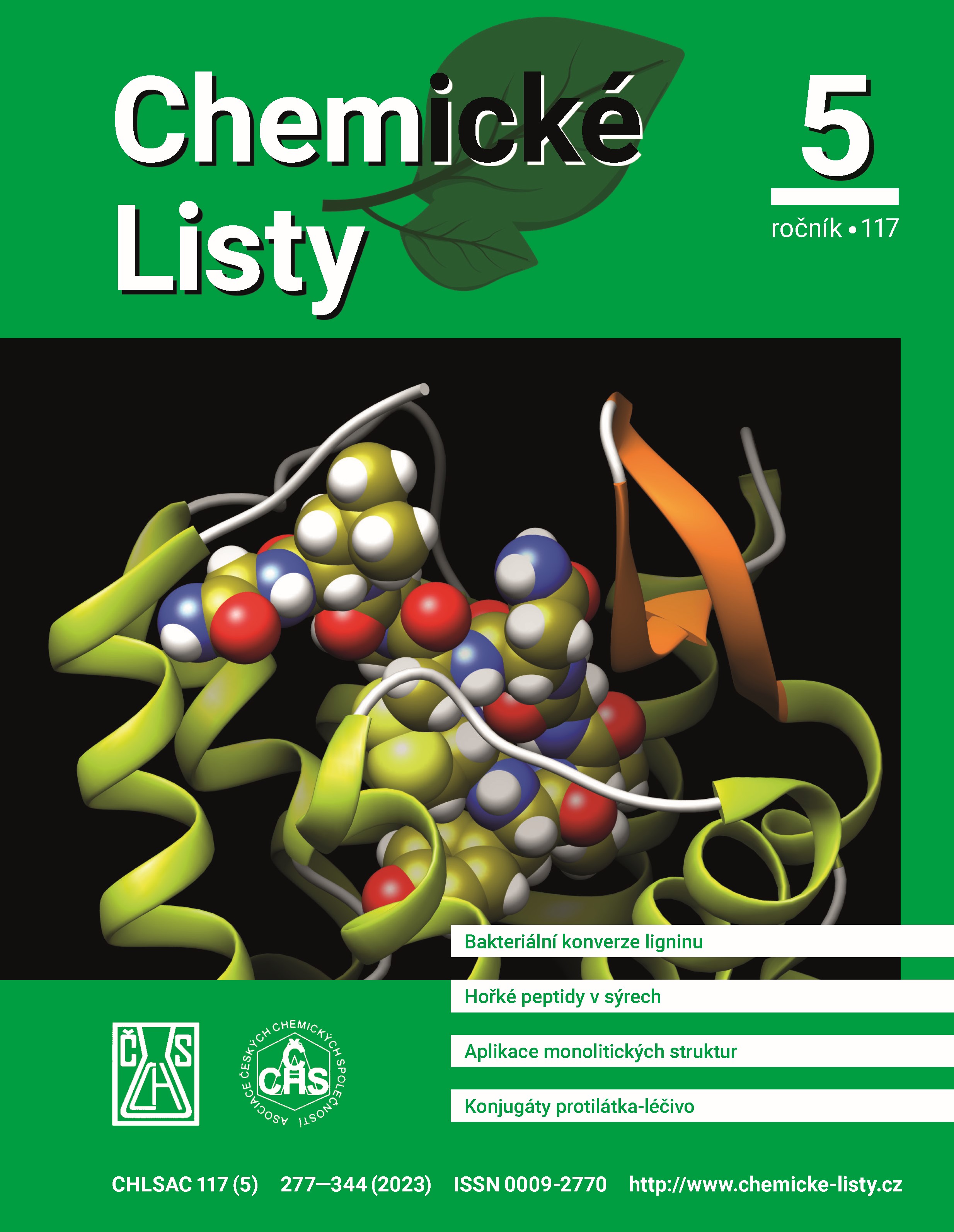Lignin and Its Bioconversion to Polyhydroxyalkanoates by the Bacterium Pseudomonas putida
DOI:
https://doi.org/10.54779/chl20230282Keywords:
lignin, polyhydroxyalkanoates, Pseudomonas putida, bioplasticsAbstract
Plant biomass is a very promising source of raw materials to produce sustainable fuels and chemicals otherwise derived from petroleum-based products. Part of plant biomass is lignin, which is one of the main natural sources of aromatic compounds. Although it is a large industrial by-product and a renewable carbon source, further processing into value-added products is currently limited. One of many applications of lignin under consideration is its bioconversion to polyhydroxyalkanoates, i.e., biodegradable polymers, which, due to their properties, could find their use in the fabrication of everyday products or in medicine and replace petroleum-based plastics in the future. They are produced by various bacteria in the form of intracellular granules but their industrial implementation is hindered by high production costs, which depend mainly on the price of the carbon source used for cultivation. Through the efficient bioconversion of lignin to polyhydroxyalkanoates, we could obtain environment-friendly and cost-effective biorefineries. However, to successfully bring the technology to an industrial scale, it is necessary to prepare a biological agent that will quickly and efficiently assimilate the aromatic components of lignin. The metabolically versatile bacterium Pseudomonas putida represents a promising candidate. Although it is a bacterium with lignolytic activity, the commercialization of the process requires further research on genetic and metabolic regulation and the preparation of a quality substrate, which depends on the source and the isolation process itself, and the success is unlikely to be achieved without good characterization and pretreatment of lignin.





